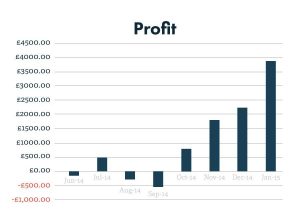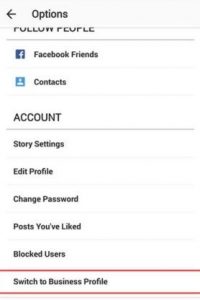The answer is it very much depends on how you do it.
Often seen as the dark side of email marketing, sending messages to email addresses who did not sign up directly to your brand is frowned upon by many. It’s easy to see why – my inbox is already a busy place and I can do without even more emails I didn’t ask for thank you very much.
As with your email marketing efforts to your first party lists, there are a host of things to get as right and as tight as possible.
Data is king
Long term success needs good data. Third party lists should be collected fairly and with transparency. People need to understand what to expect when they enter a competition or sign up with a brand who also have third party opt in. Ensure every address has an audit trail. As the list owner you should be able to provide a sign up date and web site where registration occurred – remember, you may be asked by the ICO to provide one!

As with any email list, recency is important. It’s tempting as a third party list owner to keep as big a list as possible as most will licence their data on a cpm basis but the more you send emails to old and unresponsive data, the more issues you will experience with bad delivery, blacklisting and potential spam traps.
Targeting
With a multitude of brands and offers, sending relevant emails is critical. As with any email, people are more likely to engage if the message strikes a chord with them. Tight selections will often mean smaller list sizes, but this is preferable to the problems with delivery you’ll experience due to hardly anyone opening your email.
It’s a marathon not a sprint
The majority of campaigns I see sent to third party lists that work are those that send a sequence of emails over a number of weeks. They are thought out campaigns mixing offers with relevant articles and they also remove people who convert along the journey from the sequence so as not to annoy them.
Resist temptation
There is always low hanging fruit for third party list owners to go after – gung-ho brands who care only for quick lead acquisition through volume. Examples are high interest loans, equity release and various claims offers. As some of the more unwelcome emails we receive, sending them to large numbers of people will quickly cause delivery problems and longer lasting damage to the effectiveness of the list itself.
Keep your distance
IP allocation and management needs constant attention and it should go without saying that third party data traffic should be kept separate from first party data and any automated data traffic. You will almost certainly need to use a combination of single IPs and small pools of two to three IPs – six IPs with two single back up IPs for re-mails should suffice. Human monitoring is needed here to look at how each IP is performing, which domains are getting through and which are queuing and being returned. More often than not you’ll find one or more IPs needs to be rested for a few days and this is a continual process of rotation.

If at first you don’t succeed
It’s when running re-mails things can become a little scary. After a fairly short time it’s inevitable that receiving webmail clients such as Gmail, Outlook and Yahoo will start soft bouncing addresses and you may find there are too many to ignore and that sending to them again is necessary. This is where the back up IPs come into play but, be careful, as these addresses have already been rejected they stand a higher chance of doing so again. Try a small file first and check delivery before rolling out.
Top me up
If the campaign results aren’t what you’d hoped for – or what you promised the client (!) – then topping up with more data is a good option as long as you are able to stay within your original selection criteria. Just be mindful of setting a precedent for future client campaigns.
We hear you
If you have the functionality to collect user comments on unsubscribe then you should use it. You should also respond to requests asking where you got someone’s email address from. Some people reply with threats to contact the ICO and it’s not worth risking this scenario, so ensure these people are removed from all subsequent activity if you operate anything other than a global unsubscribe method – which you should be doing.
Slow and steady
Managing the speed of your outbound email traffic is another tool in your armoury. If your campaign affords you the time, throttle your send at a low rate – as low as 1,000 per hour may be necessary for some campaigns. The alternative is having the receiving email servers do this for you inbound – which you want to avoid as they’ll bounce most of the emails back to you after two to three days and put a black mark against you too.
Margin for error
With third party data being harder to engage than first party, you need to raise your game on all other aspects of your email. Make the effort to design a truly engaging piece of work and ensure it looks good and performs well on mobile devices.
Ensure your email code is solid and that you use no more code than you need. Avoid email builders if you can and certainly don’t build an email in one system and expect it to work in another (if I had a £…!).
Get your content right, Choose images, headlines and copy that appeals to people and give them a clear an easy call to action – our attention spans aren’t getting any longer.
Lastly, check how many fingers are in the pie. Sometimes an email creative can pass through a number of agencies before it arrives with the actual sender and you may find they have all added tracking of their own to lay claim to any success. This not only risks breaking links, but also increases the chance of the email itself falling foul of email filters as the code contains multiple domains and tracking pixels.
The reality of emailing your brand or offer to a third party list is that you’re often tarred with the same brush as spammers by recipients who may have forgotten they signed up in the first place (hence the need to ensure an audit trail). Many will mark the email as spam because it’s easy to do these days, others will bring the GDPR into it because of its high profile even though emailing itself isn’t strictly a GDPR issue. But most will ignore or delete the emails because it’s the easiest thing to do and, over time, your reputation as a sender will suffer and delivery rates along with it.
But, if you do it right, it can pay dividends and help acquire new customers. Always remember, there is a real person at the end of every email address.

Digital & Social Articles on Business 2 Community
(59)
Report Post





